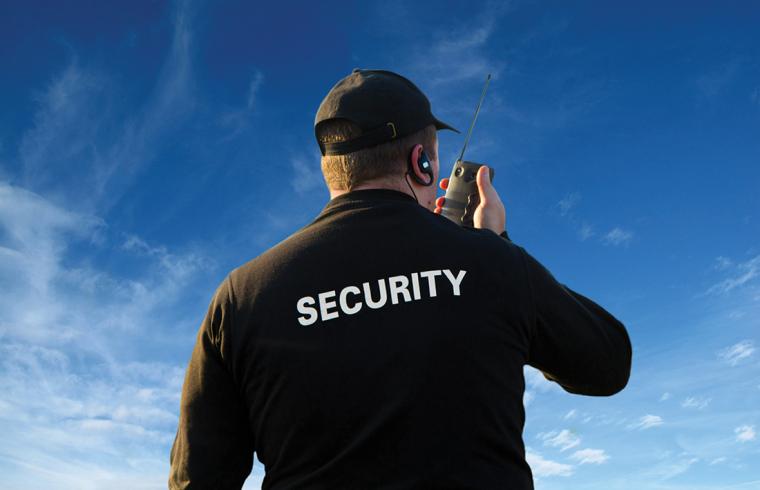
As we emerge from a global pandemic, the sports and special events industry is steadily recovering as spectators return to events. With venues at maximum capacities once again, event organizers strive to provide a safe and secure environment, which requires assessing risk levels, recruiting and training staff, exercising plans and protocols, and leveraging technology solutions appropriate to needs and budgets.
Potential threats to sports events range from inclement weather to acts of terrorism. Incidents such as the Astroworld Music Festival crowd crush and the rising cases of spectator violence and active shooter incidents across the nation reinforce the need to mitigate risks associated with mass gatherings. Furthermore, emerging threats such as cybercrime, rogue drones and the insider threat require venue and event managers to ensure effective plans, policies and response procedures are in place and practiced.

A National Center for Spectator Sports Safety and Security (NCS4) Industry Report (2021) on spectator perceptions of security practices indicated that spectators consider safety and security measures when choosing whether or not to attend an event and prefer security measures to be visible at an event. Law enforcement and venue security personnel presence, screening detection technologies, bag searches, security cameras, security wands, ability to report an incident and using K9 units were highly supported measures. This is important to note as spectators evaluate whether to attend events and their repeat business affects venue and event owners’ and operators’ revenue streams.
The NCS4 Venue Security Director Survey (2022) explored professional sports venue security issues, emerging threats, and technology solutions. Professional sports venues are actively preparing for all hazards while managing a reduced part-time workforce. Since the beginning of the pandemic, organizations have been finding it difficult to attract temporary workers for various reasons. Many experienced staffing shortages in the last two years due to COVID-19, with staff absenteeism increasing since the pandemic. Venue directors took action to mitigate staffing shortages, primarily by increasing the hourly wage.
Fan behavior is also a concern for most venue security directors, as many believe fan behavior is worse than it was 10 years ago. The most common forms of inappropriate fan behavior reported were alcohol abuse and fights between patrons, while the most concerning behaviors were fights between patrons, violence against staff members, and the use of weapons. Frequently used crowd management strategies include an established alcohol policy, signage, public address announcements, the use of barriers and event staff directing crowd movement. Besides issues with fans, venue directors frequently observe unauthorized drone activity in the airspace around their venues.
The 2022 survey also highlighted frequently used technologies, this included surveillance cameras, walk-through metal detectors, electronic tickets, stationary bollards, explosive detection canines and venue signage. Facial recognition systems, license plate readers, RFID staff identification, retractable bollards, automated barrier systems and x-ray scanner capabilities are among the most sought-after resources if additional funding was available.
These results demonstrate a desire to leverage new solutions to improve existing technologies and processes. Effectively monitoring technologies and maintaining adequate situational awareness among stakeholders is challenging, making disparate systems outdated. In most situations, highly integrative approaches are more desirable. Integrated systems allow venues to ingest multiple data streams and technologies to support decision-making and improve efficiency in real time.

Technological solutions can offer increased productivity and efficiency; however, it is important to consider operational needs and benefits before deciding on a solution. Venue and event managers should consider their operational needs, how the technology solution will impact other departments and stakeholders and the potential return on investment before making a final decision on technology purchases. Operational environment assessments, reviews of recent risk assessments, and analysis of key performance indicators (KPIs) are recommended to clarify operational needs. This process might yield that operational requirements are best met through training, plans, policies, and procedures. Conversely, assessments may indicate that technology is the most feasible option.
If technology is required, other organizational/event stakeholders should be consulted to ensure goals are aligned and no competing interests exist. For example, when considering a patron screening solution, determine how the technology will affect patron experience, wait times, ticketing operations, staffing and concessions. Several solutions should be considered before making a decision, as well as the cost for initial deployment, recurring licensing requirements, maintenance and training.
Participate in demos or trials, review operating instructions, training materials, independent reviews and any certifications, i.e., DHS Safety Act Designation or Certification. Many solution providers also offer a trial period, allowing the opportunity to further explore the solution on a smaller scale. Doing so can assist in better understanding the operational considerations and potential ROI, for example, increased efficiency and enabling employees to perform their roles better and faster, or profits expected from sponsorships and savings through reduced staffing.
With current and emerging threats and the evolution of technology solutions, venue and event managers should consider the following:
• train staff in de-escalation techniques, crowd management strategies and active shooter response.
• conduct a background check on all staff, especially individuals with access to restricted areas or privy to sensitive information.
• engage with TEAM Coalition or TIPS for alcohol management training and responsible consumer campaigns.
• clearly communicate venue and spectator policies, i.e., fan code of conduct and ejection policy, as well as the penalties for not following the policies.
• discuss the feasibility of utilizing technologies such as surveillance cameras, walk-through metal detectors, automated barrier systems, and a fan text-reporting system.
• implement a drone mitigation program and work with local/state authorities on drone intrusion response procedures.
• benchmark with peers and continue to leverage research and industry resources to inform plans, policies, and procedures.
Resources are available through various professional associations, government agencies, and academic centers. These include the Cybersecurity and Infrastructure Security Agency (CISA), Department of Homeland Security (DHS), Event Safety Alliance (ESA), International Association of Venue Managers (IAVM), Stadium Managers Association (SMA), and the Security Industry Association (SIA).
The University of Southern Mississippi’s National Center for Spectator Sports Safety and Security (NCS4), the author of the report indicated here, is the world’s leading academic research institution focused on addressing sports venue and event risks and threats. The NCS4 is partially underwritten by grants from the DHS and Federal Emergency Management Agency (FEMA) and its mission centers around three key pillars: training, research, and outreach.
The NCS4’s national and international training programs focus on risk management, incident management, emergency response, evacuation and protective measures, crowd management, and crisis communications. In addition, professional development certifications are available for all staff levels and educational degree and certificate programs are provided through the USM’s nationally recognized College of Business and Economic Development.
The research and educational mission of NCS4 is accomplished by working in close partnership with industry professionals, researchers and academics, and national and international government agencies. The NCS4 is home to the National Sports Security Laboratory, where the world’s leading research experts in sports and entertainment safety and security pursue a greater understanding of current and future challenges.
The NCS4 also offers industry engagement opportunities through its annual conference and forum events. These events provide an excellent arena to network with peers and share best practices and lessons learned to effectively address evolving security challenges. SDM
References
The National Center for Spectator Sports Safety and Security. (2022). Venue Security Director Survey. Available at ncs4.usm.edu/research/industry-reports
The National Center for Spectator Sports Safety and Security. (2021). Spectator Sports Safety and Security Survey. Available at ncs4.usm.edu/research/industry-reports


